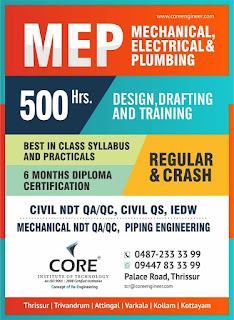Acoustic
resonance technology
Acoustic
resonance technology (ART)
is an acoustic inspection technology developed by Det Norske
Veritas over the past 20 years. ART exploits the phenomenon of half-wave
resonance, whereby a suitably excited resonant target (such as a pipeline wall)
exhibits longitudinal resonances at certain frequencies characteristic of the
target's thickness. Knowing the speed of sound in the target material, the
half-wave resonant frequencies can be used to calculate the target's thickness.
ART differs from
traditional ultrasonic testing: although both are forms of nondestructive
testing based on acoustics, ART generally uses lower frequencies and has a
wider bandwidth. This has enabled its use in gaseous environments without a
liquid couplant.
Det Norske
Veritas has licensed the technology for use in on-shore water pipes
worldwide to Breivoll Inspection Technologies AS. Breivoll has proven the
efficiency of the technology in assessing the condition of metallic water
pipes, both with and without coating. The company has since 2008 successfully
developed a method to enter and inspect water mains, and is a world-leader in
their market.
ART has also been
used in field tests at Gassco's Kårstø facility.
In 2012 DNV's ART
activities were spun out into a subsidiary HalfWave.
Main features
- Uses lower frequencies than ultrasonic
testing
- Effective in gases and liquids (i.e.
requires no liquid couplant)
- Can be used to characterize
multi-layered media (e.g. pipelines with coatings)
- Can penetrate coatings
- Can measure inside and outside metal
loss
RUV (resonance
ultrasonic vibrations)
In a closely
related technique, the presence of cracks in a solid structure can be detected
by looking for differences in resonance frequency, bandwidth and resonance
amplitude compared to a nominally identical but non-cracked structure. This
technique, called RUV (Resonance Ultrasonic Vibrations), has been developed for
use in the photovoltaics industry by a group of researchers from the University
of South Florida, Ultrasonic Technologies Inc. (Florida, US), and
Isofoton S.A. (Spain). The method was able to detect mm-size cracks in
as-cut and processed silicon wafers, as well as finished solar cells, with a
total test time of under 2 seconds per wafer.

I really liked your Information. Keep up the good work. Monoflex Shetting
ReplyDeleteNice information thanks for sharing valuable content with us.
ReplyDelete